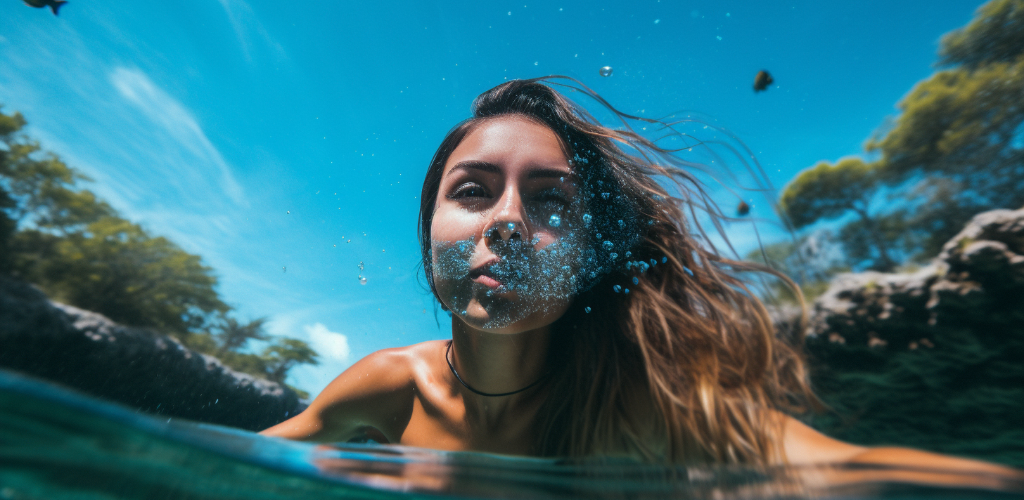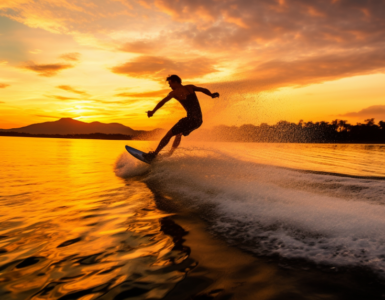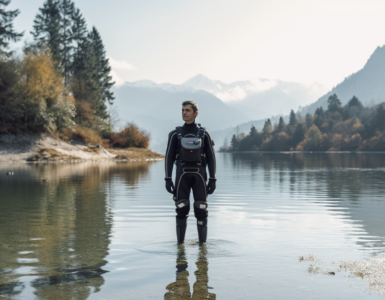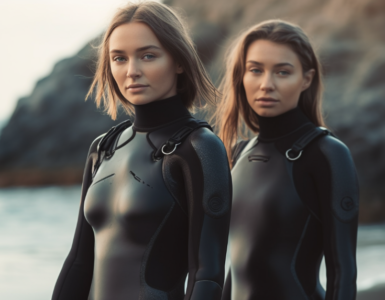Snorkeling is a popular recreational activity enjoyed by many water enthusiasts. It’s an exciting way to explore the underwater world while staying close to the surface. But have you ever wondered how snorkels work underwater? Let’s dive into this topic and satisfy your curiosity!
The Basics of Snorkeling
Snorkeling equipment is simple yet effective. It mainly consists of three key components: the mask, the snorkel, and the fins. But how does each part contribute to the snorkeling experience?
The mask provides a clear view underwater and protects your eyes from the saltwater. The snorkel, the star of our discussion, allows you to breathe while your face is submerged in the water. Lastly, the fins help propel you through the water, making it easier and more efficient to swim.
The Science Behind Snorkels
So, how does a snorkel work? It’s all about the science of air pressure and displacement. A snorkel is essentially a tube that extends from your mouth to above the water’s surface. When you inhale, you draw air down the tube and into your lungs. When you exhale, the carbon dioxide you’ve produced is pushed out through the same tube.
Ever wonder why you can breathe comfortably with your face underwater? The answer lies in the snorkel’s design. The top of the snorkel remains above the water surface, providing a continuous supply of air. This setup allows you to observe the underwater environment for extended periods without having to lift your head for air. Fascinating, isn’t it?
Types of Snorkels
Ever wondered about the different kinds of snorkels available out there? Well, there are several types, each with its unique features and uses. Let’s dive in and find out more about them!
Traditional Snorkels
The traditional snorkel, also known as a wet snorkel, is the simplest type of snorkel. Its design is straightforward: a plastic or rubber tube bent into a shape that comfortably fits around the user’s head, with one end sticking out above the water and the other end in the user’s mouth. This design allows the snorkeler to breathe air from above the water surface.
Traditional snorkels are popular for their simplicity and affordability. However, they do have a drawback. If a wave splashes over the top or the snorkeler dives under the water, the snorkel can fill up with water. The user then needs to forcefully exhale to clear the water before they can breathe again.
Dry Snorkels
Enter the dry snorkel. What sets it apart from the traditional snorkel? As the name suggests, a dry snorkel is designed to stay dry inside, regardless of the conditions. How does it manage that? Well, it’s all in the clever design.
A dry snorkel has a special valve at the top that blocks water from entering the snorkel, whether from a wave or from submersion. This means that even if you dive underwater, no water will enter the snorkel. Once you surface, you can immediately start breathing normally without having to clear the snorkel first. This feature adds to the comfort and convenience of the snorkeling experience.
The Depth Limitation of Snorkels
So, snorkels allow us to breathe while our faces are submerged in water. That’s fantastic, right? But here’s a question: why can’t we use snorkels for deep diving?
The answer lies in the way our bodies work and the laws of physics. Snorkels are effective only as long as they can draw in air from above the water surface. As you go deeper underwater, the pressure increases, making it harder to breathe through the snorkel. At a certain depth, it becomes impossible to draw in air due to the water pressure. This is why snorkels are ideal for surface swimming and shallow dives, but not for deep underwater diving.
Another limiting factor is the length of the snorkel. The longer the snorkel, the harder it is to breathe, because you have to move the air over a greater distance. In fact, if a snorkel is too long, it can become dangerous, as exhaled carbon dioxide may not fully exit the snorkel, causing the user to breathe it back in.
So, while snorkels are a fantastic tool for exploring the underwater world, they do have their limitations. But within those limits, they provide an incredible way to experience the wonders of the sea!
Common Misconceptions About Snorkels
Snorkeling is an exhilarating activity, but it can also be a source of numerous misconceptions. One common misconception is the belief that snorkels allow you to breathe underwater like you would on land. But is this really the case? Well, not exactly. A snorkel is not like a scuba tank that provides a constant supply of air. It simply provides a conduit to the surface air while your face is submerged. It doesn’t allow you to breathe underwater at significant depths.
Another misconception is that snorkels can be used for deep diving. This is far from the truth. Snorkels are designed for surface swimming and shallow dives. If you try to go too deep, water pressure increases and it becomes difficult to breathe. So, it’s crucial to remember that snorkels are not designed for deep diving.
Safety Precautions While Snorkeling
Snorkeling is a fun and relaxing activity, but like any other water sport, it’s not without its risks. Therefore, safety precautions are of utmost importance. While the water may seem calm and inviting, currents can change rapidly, and marine life can be unpredictable. So, how can you ensure your safety while snorkeling?
Firstly, never snorkel alone. Always have a buddy with you. It’s not only more fun, but it’s also safer. If you get into trouble, your buddy can help or get help. Secondly, always stay within your comfort zone. If you’re not a strong swimmer, don’t venture too far from shore. And remember, the ocean is not a swimming pool. Currents, waves, and marine life can all pose risks.
Lastly, always respect marine life. Remember, you’re a visitor in their home. Don’t touch or disturb the animals or their habitats. Not only can this harm the animals, but some can also pose a risk to you. So remember, look but don’t touch!
| Safety Measure | Why It’s Necessary | Potential Risks of Ignoring |
|---|---|---|
| Never snorkel alone | Having a buddy can provide help in case of emergencies | Increased risk of drowning or getting lost |
| Stay within your comfort zone | Prevents exhaustion and keeps you close to safety | Potential for exhaustion, panic, and getting caught in currents |
| Respect marine life | Protects the marine environment and its inhabitants | Potential harm to marine life and risk of injury to the snorkeler |
Tips for a Great Snorkeling Experience
Are you ready to get the most out of your snorkeling adventures? Here are some insider tips that seasoned snorkelers swear by!
- Choose the right equipment: Ensure your mask, snorkel, and fins fit properly. An ill-fitting mask can let in water, while a poor snorkel may make breathing difficult.
- Relax and take your time: Don’t rush. Snorkeling is about enjoying the underwater world at a leisurely pace. Keep your movements slow and steady.
- Never snorkel alone: Always have a buddy with you for safety reasons. Plus, it’s more fun to share the experience!
- Observe, don’t touch: Remember, you’re a guest in the underwater world. Look, but don’t disturb the marine life.
The Future of Snorkeling Technology
So, what’s on the horizon for snorkeling technology? Exciting advancements are being made that could revolutionize our underwater experiences.
Imagine a mask that doesn’t fog up or a snorkel that filters out water automatically. What about wearable technology that can identify the marine life around you? The possibilities are endless!
Parting Shots
And there you have it! Our deep-dive into the world of snorkeling. We’ve covered everything from the science behind snorkels to the future of snorkeling technology.
Are you ready to dive in and start exploring the underwater world?
- Understand the basics of snorkeling and how snorkels work
- Know the different types of snorkels and their functionalities
- Be aware of common misconceptions about snorkeling
- Follow safety measures while snorkeling
- Utilize tips for a great snorkeling experience
- Stay tuned for future advancements in snorkeling technology




